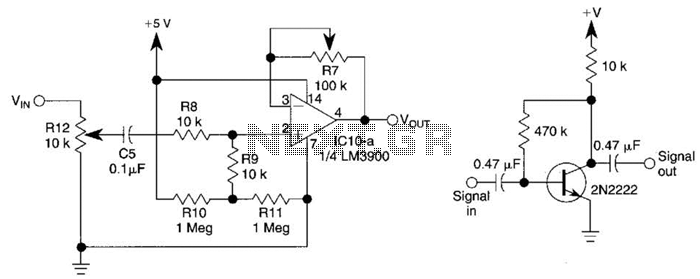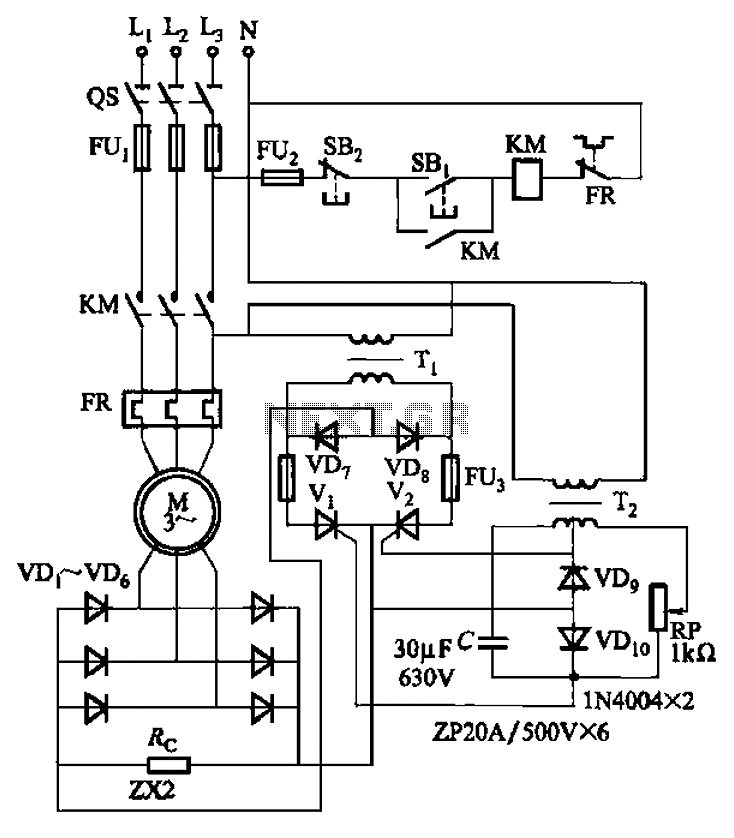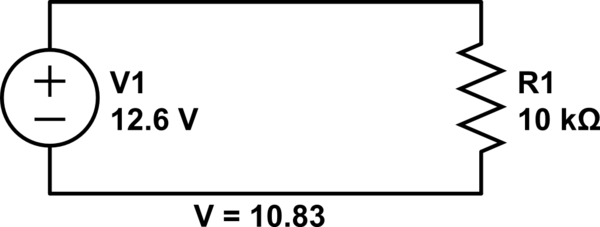
Low pressure break alarm circuit diagram

The circuit operation principle of the device illustrated in the figure is as follows: When the barbed wire is intact, the output pin of the LSE is high due to the absence of contact. Consequently, the transistor VT is turned off, resulting in the relay J being released, and the alarm remains inactive.
The described circuit operates based on the integrity of a barbed wire sensor, which serves as a security mechanism. When the barbed wire remains undisturbed, it creates a high signal at the output pin of the LSE (Line Sensor Element). This high signal indicates that there is no breach in the monitored area, maintaining the system in a standby state.
In the circuit, the transistor VT acts as a switch that controls the relay J. When the output from the LSE is high, the base of the transistor is not sufficiently energized, leading to its non-conduction state. Consequently, the relay J, which is responsible for activating the alarm system, remains deactivated.
In the event of a disturbance to the barbed wire, the output from the LSE will drop to a low state. This change triggers the base of the transistor VT, allowing current to flow through it and turning it on. As a result, the relay J is energized, which activates the alarm system, alerting users to a potential security breach.
The circuit can be enhanced by incorporating additional components such as a diode across the relay coil for flyback protection, ensuring that voltage spikes do not damage the transistor when the relay is switched off. Furthermore, a resistor may be added to the base of the transistor to limit the current and prevent damage to the transistor from excessive current flow.
Overall, this circuit design effectively utilizes a simple yet reliable mechanism to monitor the integrity of a security barrier, providing an essential function in security and surveillance applications.Circuit operation principle of the device shown in Figure. When the barbed wire Fe intact, LSE's O, feet collusion between its pin output high, the transistor VT end, the relay J is released, the alarm does not work.
The described circuit operates based on the integrity of a barbed wire sensor, which serves as a security mechanism. When the barbed wire remains undisturbed, it creates a high signal at the output pin of the LSE (Line Sensor Element). This high signal indicates that there is no breach in the monitored area, maintaining the system in a standby state.
In the circuit, the transistor VT acts as a switch that controls the relay J. When the output from the LSE is high, the base of the transistor is not sufficiently energized, leading to its non-conduction state. Consequently, the relay J, which is responsible for activating the alarm system, remains deactivated.
In the event of a disturbance to the barbed wire, the output from the LSE will drop to a low state. This change triggers the base of the transistor VT, allowing current to flow through it and turning it on. As a result, the relay J is energized, which activates the alarm system, alerting users to a potential security breach.
The circuit can be enhanced by incorporating additional components such as a diode across the relay coil for flyback protection, ensuring that voltage spikes do not damage the transistor when the relay is switched off. Furthermore, a resistor may be added to the base of the transistor to limit the current and prevent damage to the transistor from excessive current flow.
Overall, this circuit design effectively utilizes a simple yet reliable mechanism to monitor the integrity of a security barrier, providing an essential function in security and surveillance applications.Circuit operation principle of the device shown in Figure. When the barbed wire Fe intact, LSE's O, feet collusion between its pin output high, the transistor VT end, the relay J is released, the alarm does not work.





